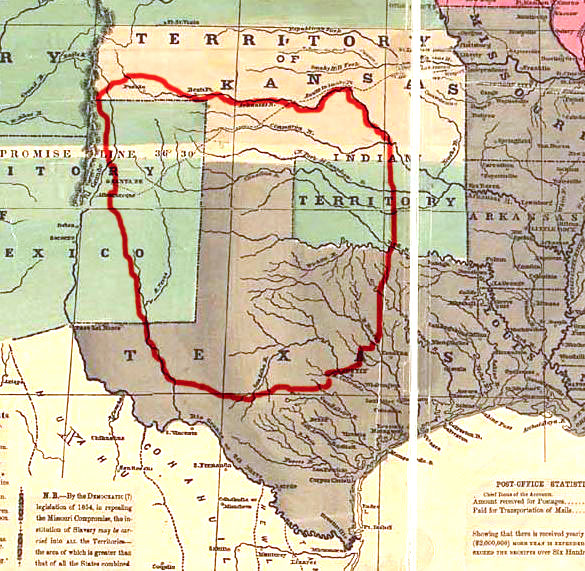As noted, traveling to parks “out west” means a lot of traveling. Like, thousands of miles. To get to the first stop worthy of a stop (Durango, Colorado) is 1600 miles of cross-country endurance, which translates to 6 days at our relaxed pace. So, to pass the time, we will often listen to books on tape. A few years ago, we listed to Undaunted Courage as, not coincidentally, we meandered northwest along the Lewis and Clark route. In a similar way, this trip found us listening to Empire of the Summer Moon, a story that culminates at the Palo Duro canyon near Amarillo, an intermediate stop on our route west.
Hold that thought …
When we were young, depictions of American Indians typically took one of two courses: they were either noble natives, who lived at one with the land, peaceably communing with nature while they did joyful dances beating their tom-toms; or they were vicious savages who rode out of the sunset, screaming like the crazed killers they were, and scalping every white man they met, except for those they tied to ant hills to bake in the sun. Never mind that neither depiction was very accurate, or even that trying to generalize the traits of “Indians” as a class makes as much sense as trying to describe the character of Prussians, French, Italians, and Brits as one class of “Europeans.”
Even still, I could never totally jettison the image of vicious red men lurking behind every rock in the Western landscape. I sometimes felt a little bad about harboring such an unfair stereotype, but that guilt was considerably lessened as we listened to Empire of the Summer Moon. It turns out that the Comanches lived up to every bit of that stereotype, and more. They lived in a culture that lived for war, first by attacking the neighboring tribes they encountered, and then by turning their finely honed skills on white men as settlers encroached on the Comanches’ territory. Using their unparalleled skills as horsemen, they would descend on a settlement, killing and scalping the men, raping and mutilating the women, and taking the children as slaves.

Here’s where Empire of the Summer Moon comes in. In 1836, Comanches descended on Fort Parker and, after doing what Comanches do, took a number of the children as slaves, including a nine-year-old girl, one Cynthia Ann Parker. Over time, Cynthia Ann assimilated into the tribe, and eventually married the chief Peta Nocona. In around 1850, Nocona and Cynthia Ann had their first child, Quanah. While all of this was going on, the Parker family was desperately searching for the kidnapped children. That story is what is loosely described in the John Ford film, The Searchers, starring John Wayne. In any event, Quanah grew to become a fearless warrior, and, in the Comanche manner, his prowess in battle caused him to be selected as the chief of the band.
Fearsome warriors or not, the growing white presence, and pressure from the U.S. Army, was taking its toll on the Comanches. In 1874, a number of Comanche Indians, along with members of the Cheyenne, Arapaho, and Kiowa tribes, had taken shelter the Palo Duro Canyon.

The 4th U.S. Calvary, under the command of Colonel Ranald S. Mackenzie, moved against the encamped Indians. Although under intense fire from Indians in the slopes above the valley, Mackenzie’s troops effected a complete rout of the tribes. Indian casualties were light, but they lost all of their winter stores, and their encampments were burned, and, even worse, 1000 to 2000 of their horses were shot. The effect of the “Battle of Palo Duro Canyon” was that the Comanche wars were over. With no food, no shelter, and no means of movement, Quanah Parker realized all was lost and persuaded the Comanches that further fighting was futile. In 1875, Quanah and his band of Comanches surrendered at Ft. Sill.
Wendy and I spent the day touring around Palo Duro Canyon State Park, and even attended a wonderful little musical in the park amphitheater that recounted the history of the region. Interestingly, the guy who portrayed Quanah Parker in the musical was actually one of his direct descendants. In our view, our stop in Palo Duro Canyon, even though just a waypoint on the journey to our “real” stops out west, was time well spent, and listening to Empire of the Summer Moon and then visiting the place where the grand story reaches its final conclusion, made this part of the trip especially worthwhile.
